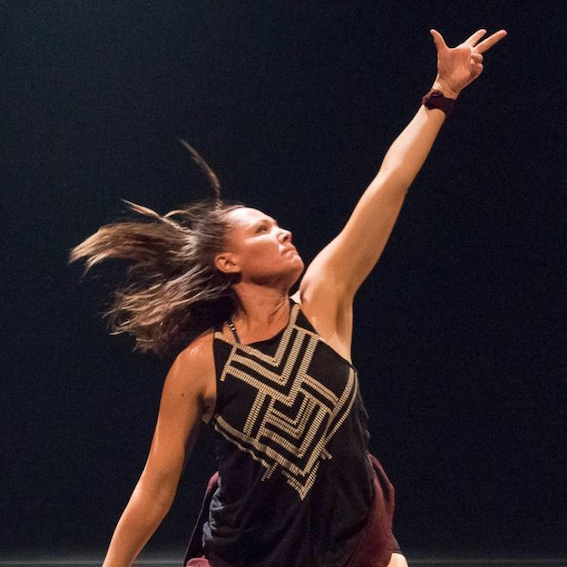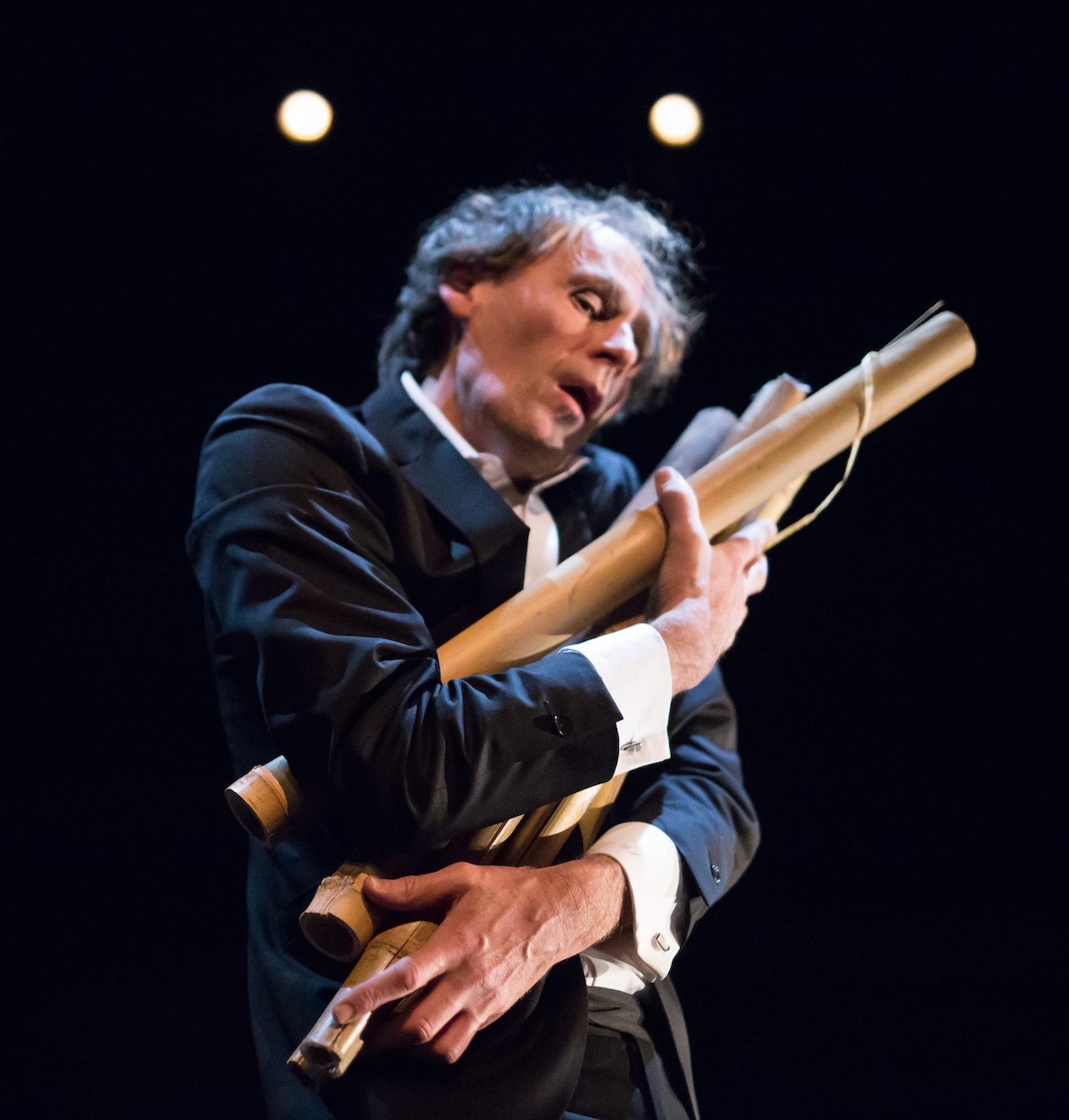November 15th and 16th, 2019, at Harbourfront Centre Theatre.
Paying homage to the late René Highway and celebrating Indigenous artistry, Claudia Moore’s MOonhORsE Dance Theatre presented Older & Reckless #42 on November 15th and 16th at Toronto’s Harbourfront Centre Theatre. Opened by Karen Pheasant, professor at the University of Alberta, this season featured six works by seven distinguished artists from various nations: Bill Coleman, Barbara Kaneratonni Diabo, Christine Friday, Elizabeth Langley, JP Longboat, Byron Chief Moon, and Lee Maracle.
The show opened with Life is Good (thanks), a community project initiated by Barbara Kanertonni Diabo. Inspired by the Haudenosaunee Thanksgiving Address, this work was a reminder to be grateful and humble as we both provide for and rely on our communities. Five bodies blowing in the wind are greeted by and integrated into a whole community of people interweaving, giving thanks and offering prayers to one another.
Round dance around hoop dancers, joy, support, prayer
Shift in the atmosphere, thunderstorm approaches, one community member is left struggling, walking through a world alone, he is brought back into the circle by a relative/friend
Two-step dance
Closes in the way it began, full-circle.

The second piece in the program was an offering from Christine Friday titled Maggie & Me: A healing dance
Eyes covered by pointed hat, then hat placed front centre
Contrasting pow wow music with Bach and interspersing traditional dances while struggling to perform balletic movements
Searching through dream worlds and memoryscapes, she brought the audience with her on the long journey, coming home to her Anishinaabe culture and ancestors.
Sliding and rolling, unstable, using momentum, spinning and whirling around
Dancing through a storm
Heavy realization of the journey she has taken, waking up from a dream, cradling the hat like a newborn baby, puts the hat back on with a newfound confidence.

JP Longboat and Byron Chief Moon performed Greed, Duet which was choreographed in collaboration with Luglio Romero.
Thousand-yard stares
A type of zombified waltz between puppet and puppeteer, switching roles and wrestling for control over the other
Reaching into each other’s tattered pockets in a futile power struggle
Spider and snake imagery
Who won? Who is in control? No one, neither
Devastating comment on the effect of capitalism and manifest destiny on the mind, body, and spirit.

Through the medium of the Salish Longhouse Flood Story, Bill Coleman and Lee Maracle delivered an emotional, moving, and lightly humourous interdisciplinary performance titled Out of the Longhouse. The employment of sound, props, and voice, constituted the fourth piece in the program, with Lee Maracle sharing a lesson of strength, hope, love, and homecoming.
Tangling and untangling himself in sticks and straw, stumbling and tap dancing
Embodying Raven
Gathering the sticks as Lee describes carrying the bones of the ancestors in the aprons of the skirts
Final emotional embrace, recognition of a loved one, returning home.

Elizabeth Langley
Seeking the Dancing Soul of the Walking People
Seeing the audience, acknowledgement
Dancing on the edges of the light, apprehensively entering and exiting, circling
Entering the light, the light shifts and moves elsewhere
Presenting herself to the audience.

Barbara Kaneratonni Diabo closed the evening with an excerpt of her collaborative work with Marian Atehawi Snow, The Medicine Wheel. Honouring the four colours and four directions through hoop dance, a story was told with the 20 hoops of white, yellow, red and black. Images of winged ones, 4-legged ones, and a traveler in a canoe
Wearing medicine wheel regalia
Laid out hoops in a circle, following pattern of a medicine wheel
All my relations.
Unifying this collection of choreographic works was the underlying theme of connection: connection to community, connection to culture, connection to mind, and connection to spirit. What does it mean to have a connection? What connections do we make as Indigenous peoples and Treaty partners? What effects does disconnection have on us and how do we reconnect? This theme was corporealized and expressed through a deep connection to the body as the lines between these different types of connections blurred to show wholistic Indigenous worldviews of healing.
In re-connecting the circle through dance, storytelling and healing our communities, we heal ourselves.
Tagged: Indigenous, Writers & Readers, Canada , ON , Toronto






